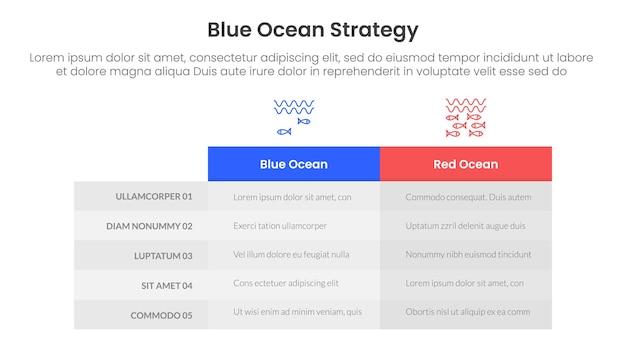Maximize DeFi Returns with Solana Staking Derivatives in the US

Staking derivatives on Solana offer US investors a way to amplify their DeFi returns by unlocking liquidity from staked assets, allowing for participation in additional yield-generating opportunities.
Are you looking to take your decentralized finance (DeFi) returns to the next level? Staking derivatives on Solana could be the key. This innovative approach allows you to unlock the liquidity of your staked assets, opening up a world of new opportunities within the DeFi ecosystem, especially within the US market.
Understanding Solana Staking
Before diving into staking derivatives, it’s crucial to understand the basics of staking on the Solana blockchain. Solana, known for its high speed and low transaction costs, utilizes a Proof of Stake (PoS) consensus mechanism.
What is Staking?
Staking involves locking up your SOL tokens to support the network’s operations. By staking, you become a validator or delegate your stake to a validator, participating in the block validation process and earning rewards in return.
Benefits of Staking SOL
Staking SOL offers several advantages, including earning passive income through staking rewards, contributing to the network’s security, and participating in governance decisions. However, traditional staking also involves a lock-up period, during which your SOL becomes illiquid.

Staking provides a foundational layer for participating in Solana’s DeFi ecosystem, but its inherent illiquidity can be a limitation. This is where staking derivatives come into play, offering a solution to unlock the potential of staked assets without sacrificing their earning power. By understanding the basics of Solana staking, you’re better prepared to explore the advantages of using staking derivatives to amplify your returns.
What are Staking Derivatives?
Staking derivatives represent a groundbreaking solution to the liquidity challenges posed by traditional staking. These derivatives offer a way to represent your staked SOL tokens in a liquid, tradable form.
How Staking Derivatives Work
When you stake SOL and receive a staking derivative, you’re essentially receiving a token that represents your staked SOL. This token can then be freely traded, used as collateral in DeFi protocols, or utilized in other yield-generating activities, all while your original SOL remains staked and earning rewards.
Key Advantages of Staking Derivatives
The primary advantage of staking derivatives is the ability to maintain your staking rewards while simultaneously accessing the liquidity of your assets. This enables you to participate in a wider range of DeFi opportunities, maximizing your overall returns.
- Liquidity: Access your staked assets without unstaking.
- Flexibility: Utilize your derivatives in various DeFi protocols.
- Compounding Returns: Earn staking rewards and additional yield simultaneously.
Staking derivatives bridge the gap between staking and DeFi engagement, providing users with unprecedented control and flexibility over their assets. This innovative approach is transforming the way investors interact with the Solana ecosystem. In essence, staking derivatives are unlocking a new era of DeFi possibilities, especially within the US market, by allowing users to get the most out of their staked SOL.
Popular Solana Staking Derivatives
Several platforms offer staking derivatives on Solana, each with its own unique features and benefits. Understanding these options is crucial for choosing the derivative that best suits your investment strategy.
Marinade Finance
Marinade Finance is one of the most popular staking derivative platforms on Solana. It allows users to stake SOL and receive mSOL, a staking derivative that can be used across various DeFi protocols.
Lido on Solana
Lido, a well-known staking provider, also offers staking derivatives on Solana. With Lido, you can stake SOL and receive stSOL, which represents your staked SOL and accrued rewards.
Socean Staked SOL
Socean offers a decentralized staking pool that issues scnSOL as a staking derivative. They focus on optimizing staking rewards through a diversified validator strategy.

Selecting the right platform involves considering factors such as the platform’s reputation, the liquidity of the derivative token, and the available integrations with other DeFi protocols. Each staking derivative offers slightly different approaches, allowing investors to align their choice with their risk tolerance and investment goals. By carefully evaluating these options, US investors can strategically use staking derivatives to optimize their returns.
Risks and Considerations
While staking derivatives offer significant advantages, it’s crucial to be aware of the associated risks. Like any DeFi investment, staking derivatives come with potential downsides that need to be carefully considered.
Smart Contract Risks
Staking derivatives rely on smart contracts, which are susceptible to bugs or vulnerabilities. A flaw in the smart contract could lead to a loss of funds.
Liquidity Risks
While staking derivatives aim to provide liquidity, there is always a risk that the derivative token may not be easily tradable or that its price may deviate significantly from the value of the underlying staked SOL.
Depeg Risks
Some staking derivatives may lose their peg to the underlying asset due to various market conditions. This “depeg” event can cause significant losses for holders of the derivative.
Before investing in staking derivatives, it’s essential to conduct thorough research, understand the smart contract risks, and assess the liquidity and stability of the derivative token. Diversifying your investments and using risk management tools can help mitigate these potential risks. By acknowledging and preparing for these risks, US investors can make more informed decisions about using staking derivatives.
Strategies for Maximizing DeFi Returns
Once you’ve acquired staking derivatives, you can employ various strategies to further amplify your DeFi returns. These strategies involve leveraging your derivatives in different DeFi protocols to generate additional yield.
Yield Farming
Use your staking derivatives to participate in yield farming opportunities on platforms like Raydium or Orca. By providing liquidity with your derivatives, you can earn additional rewards in the form of trading fees and platform tokens.
Collateralization
Utilize your staking derivatives as collateral in lending and borrowing protocols like Solend or Mango Markets. This allows you to borrow other assets while still earning staking rewards on your staked SOL.
Leveraged Staking
Some platforms offer leveraged staking opportunities, where you can borrow additional SOL to stake and earn even more rewards. However, be aware that leveraged staking also amplifies your risk.
- Diversify: Spread your derivatives across multiple protocols.
- Monitor: Keep a close eye on market conditions and protocol risks.
- Reinvest: Compound your returns by reinvesting earned rewards.
By strategically deploying staking derivatives in these DeFi activities, US investors can significantly boost their overall returns. However, it’s important to remember that each strategy carries its own level of risk, and careful research and risk management are crucial for success. With informed decision-making and diligent monitoring, staking derivatives can be a powerful tool for maximizing DeFi returns.
Navigating the US Regulatory Landscape
The regulatory landscape for cryptocurrencies and DeFi in the United States is constantly evolving. It’s essential to be aware of the current regulations and how they may impact your use of staking derivatives.
SEC Regulations
The Securities and Exchange Commission (SEC) has been actively investigating and enforcing regulations related to crypto assets. Staking derivatives may be subject to securities laws, depending on their structure and how they are marketed.
Tax Implications
Staking rewards and profits from trading staking derivatives are generally taxable in the US. It’s important to consult with a tax professional to understand your tax obligations and ensure compliance.
KYC/AML Compliance
Many DeFi platforms are implementing Know Your Customer (KYC) and Anti-Money Laundering (AML) procedures to comply with US regulations. Be prepared to provide identification and comply with these requirements when using staking derivative platforms.
Staying informed about the evolving regulatory environment is crucial for US investors using staking derivatives. Consulting with legal and tax professionals can help ensure compliance and mitigate potential risks. By understanding the legal and regulatory considerations, investors can confidently navigate the DeFi landscape and make informed decisions about their investments.
| Key Point | Brief Description |
|---|---|
| 💰 Staking Derivatives | Tokens representing staked SOL, unlocking liquidity. |
| 💡Popular Platforms | Marinade Finance, Lido, and Socean offer staking derivatives. |
| ⚠️ Key Risks | Smart contract risks, liquidity issues, and regulatory changes. |
| ⚖️ US Regulations | Consider SEC regulations and tax obligations in the US. |
FAQ
▼
Staking derivatives allow you to access the liquidity of your staked SOL while still earning staking rewards, enabling participation in other DeFi activities.
▼
Popular platforms include Marinade Finance, Lido on Solana and Socean, each offering a slightly different approach to staking and derivative issuance.
▼
Key risks include smart contract vulnerabilities, potential iliquidity of the derivative token, and regulatory uncertainty regarding DeFi in the US.
▼
You can use your staking derivatives in yield farming, as collateral for loans, or in leveraged staking strategies to potentially increase your overall returns.
▼
US investors should be aware of SEC regulations, understand the tax implications of staking and trading, and comply with KYC/AML requirements on DeFi platforms.
Conclusion
Staking derivatives on Solana offer a compelling opportunity for US investors seeking to amplify their DeFi returns. By understanding the mechanics, risks, and regulatory landscape, you can strategically leverage these innovative financial instruments to achieve your investment goals. Remember, however, that diligent research and careful risk management are paramount to success in the dynamic world of decentralized finance.





